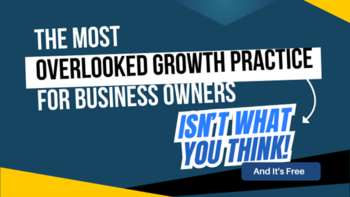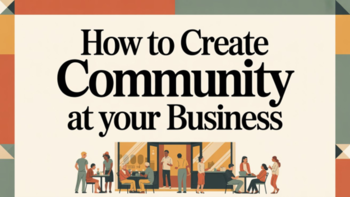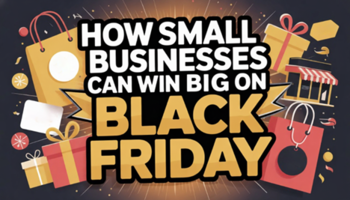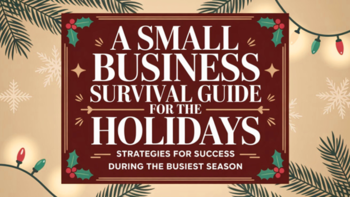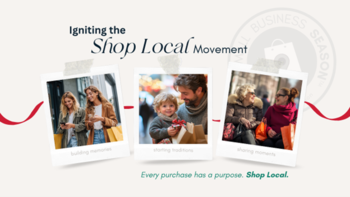Chamber Happenings
The Most Overlooked Growth Practice for Business Owners Isn’t What You Think. And It’s Free.
Running a business means constantly planning ahead — but one of the most overlooked (and free) growth practices is pausing to reflect. This piece encourages business owners to write a letter to their future self: recognizing progress, acknowledging challenges, and setting a compassionate vision for the year ahead. It’s a simple exercise that helps refocus your “why,” build resilience, and lead with clarity.
How to Create Community at Your Business
A business can turn repeat customers into a true community by shifting from transactions to relationships. Learning customers’ names and stories, creating simple rituals or clubs, and treating regulars like insiders helps people feel connected and valued. Designing a space where customers can interact, sharing their stories in marketing, and building light systems to remember details all strengthen this sense of belonging. When customers feel like “this is my place,” they return more often, recommend the business to others, and stay loyal—even when competitors offer alternatives.
Keeping Up With Tech
Keeping up with technology can feel overwhelming, but you don’t need to master every new tool — just the ones that help your business grow, save time, or reduce risk. Set a simple weekly “tech check-in,” follow a few trusted experts, and use AI or your network to help filter what truly matters. Start small, test one tool at a time, and keep a “Not Now” list for future ideas. The goal isn’t perfection — it’s becoming tech-literate enough to make smart, confident decisions for your business.
How Small Businesses Can Win Big on Black Friday
Black Friday doesn’t have to be a competition with big-box stores. Small businesses can win by creating a calm, welcoming, and memorable shopping experience. Ideas include quiet-hour shopping, VIP appointments, curated gift bundles, gratitude walls, sensory elements like music and seasonal scents, and partnerships with nearby businesses to create unique experiences. Focus less on discounts and more on how customers feel when they walk through your door—because that’s what keeps them coming back.
A Small Business Survival Guide for the Holidays
Small businesses can reduce holiday stress and boost end-of-year success by focusing on small daily improvements, organizing their environment, building simple routines, and relying on systems rather than willpower. By making good habits easy, staying anchored in their identity, and prioritizing rest, they can navigate the busy season with clarity and momentum.
Win at First Impressions
First impressions shape how customers feel about your business before you ever speak to them. From curb appeal to your website, greeting, and overall atmosphere, every detail sends a message. Clean, clear, and welcoming environments—both physical and digital—build trust, reduce confusion, and increase the likelihood that customers will return. Small, intentional improvements can make a big difference in customer loyalty and overall success.
Igniting the Shop Local Movement: Every Purchase Has a Purpose
This holiday season, every purchase has power. When we shop local, more of our dollars stay right here in Yuma County—supporting local jobs, fueling community growth, and strengthening the businesses that make our region thrive. Let’s all do our part to uplift local this Small Business Season.
12 Easy Newsletter Formats to Keep Your Business Top of Mind
This article explains 12 simple newsletter formats businesses can use to stay connected with their audience without spending a lot of time. Each format offers different benefits—such as building trust, driving sales, or providing value—so businesses can choose what best fits their goals, voice, and audience preferences.
Beyond theMixer: Maximizing Your Chamber Membership
Your membership is more than networking events—it’s a toolkit designed to help your business grow. From free training sessions and member spotlights to exclusive cost-saving programs and direct access to trusted resources, the chamber can save you time and money while boosting your visibility. Take advantage of these benefits and make your membership work for you!
How to Start Using AI in Your Small Business (Without the Overwhelm)
The article explains that many small business owners experience “AI paralysis” — feeling overwhelmed by all the AI options and unsure where to start. Instead of chasing every new tool, business owners should identify their top operational pain points and test small, low-cost AI solutions for each. These small experiments can save time, increase efficiency, and build confidence without major risk or expense.
